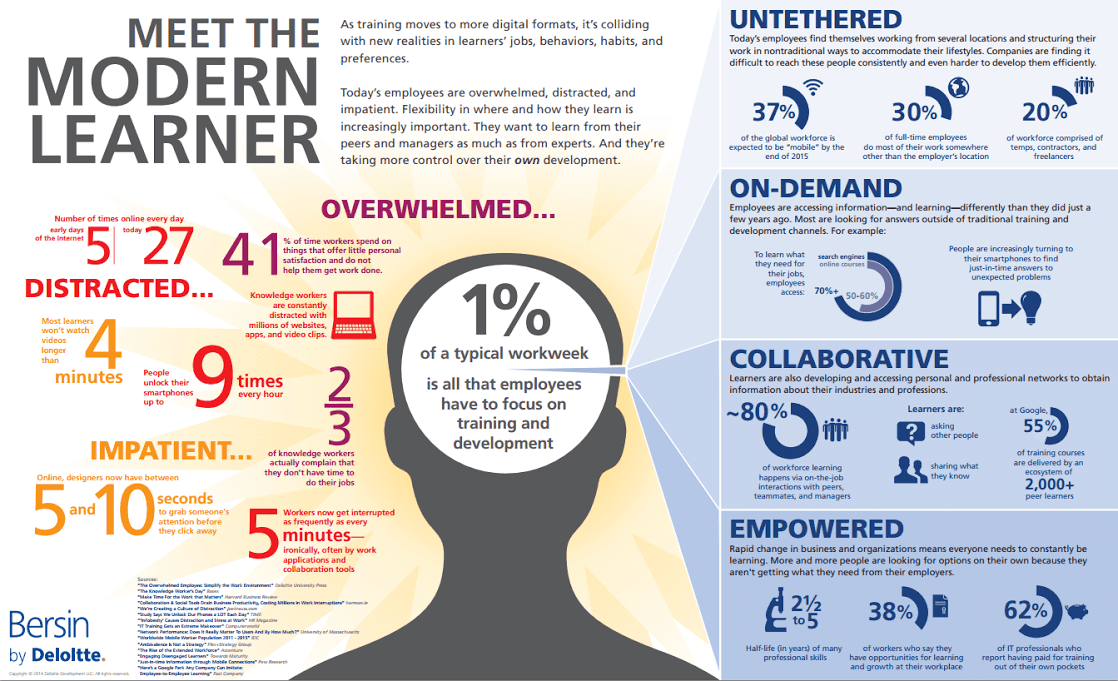
Every project, especially those for enterprise businesses, needs a clear hierarchy of task importance; this is easy in concept and hard in application.
I can personally attest to the fact that prioritizing complex projects is much easier said than done, especially when it comes to managing employees. Since I do my best to hire top-shelf candidates, I can forget that even though I hired the right person for the job, he or she still needs a significant amount of coaching and training for success.

After years of hiring employees, I’ve learned one golden rule …
When it comes to prioritization, every hiring manager should move employee training to the top of the list of importance. Employee training improves productivity, increases retention and elevates job satisfaction rates.
1) Improve employee morale
When employees are satisfied, they are less likely to look for different opportunities — both inside and outside of your enterprise. Ideally, all your employees will want to advance, but there’s only so much room to move up the ladder.
To keep employees satisfied and contributing in their current roles, you need to help develop their professional skills and help them pursue their goals through employee training.
When you invest in employees, they are more likely to have a positive attitude. Employees who receive training also show higher levels of engagement than employees who don’t receive training.
Education helps workers feel excited about what they are learning and inspires them to apply their knowledge to their job; this offers a win-win for both the enterprise and the employees’ feelings of usefulness and success.
2) Tackle weaknesses
My childhood math teacher would always tell me “not quite yet” when I got a solution wrong. Even when students were completely off track, he never told them that they were “lost” or “wrong.”
For whatever reason, this teacher’s methodology has stuck with me for many years. He understood that telling people they don’t understand or are wrong limits their potential for overall success.
Similarly, when you tell employees they are wrong or point out their weaknesses, they can shut down. Training provides a way to work on business and individual weaknesses without making anyone feel victimized or less than. In short, the right programs will empower employees to overcome weaknesses and setbacks with confidence.
3) Support the bottom line
Investing in your employees is a sound ethical practice, and it’s also helpful for your bottom line. The best hiring managers know that a key retention tool is a comprehensive training program. Well-designed programs reduce turnover.
To look at the numbers, when an enterprise replaces a salaried employee, it costs about six to nine months of his or her salary to find a replacement. For an employee making $40,000 yearly, replacing them will cost you about $25,000.
In comparison, an employee training program is generally about $1,250 per employee per year. Although this cost adds up, it is minuscule in comparison to the costs of recruiting, hiring and training replacements. Turnover is natural and can’t be avoided completely, but the financial risks can be mitigated with the right training programs.
For a real-life example of this, consider Motorola.
The telecommunication group was not only able to avoid financial strain from turnover with the help of an employee training program, but they also experienced improved productivity, which ultimately supported their bottom line. Within three years, Motorola found that every dollar they put toward training resulted in a 30 percent increase in productivity.
4) Keep up with technology
Technology as a large effect on business operations. Regardless of the number of years your enterprise has been around, technology can always help you improve your results and increase your revenue.
Although it might seem like an overstatement, your technology and the infrastructure around it can largely influence your company’s success as a whole. Technology determines everything from how you communicate internally to how effectively you can execute projects.
No matter how talented your employees, they will need to learn new systems and processes. If training isn’t part of your company culture, holding a training can seem like a distraction from “real work.” Of course, the new knowledge is actually critical to workflow.
If your employees don’t understand a new system, their productivity will slow down, but employees don’t always see things in this light.

If you commonly hold trainings, your employees will know what to expect. They will have confidence in the process and will think of it as necessary development instead of an inconvenience to their workflow.
Get started before it’s too late
When it comes to enterprises, prioritization is difficult. Still, there are some things we know to be true, thanks to overwhelming research.
Investing in your employees through employee training is one of the most important things companies can do to succeed. Helping coach your employees on how to learn and on what to learn helps you create your ideal workforce and allows you to overcome barriers.
All that said, starting an employee training program is no simple task …
If you’re going to go down this road, you have to fully commit the time and resources required for an advantageous outcome. Luckily, there are many sound examples at the enterprise level that exhibit why employee training must be a top priority.
Get the TNW newsletter
Get the most important tech news in your inbox each week.




